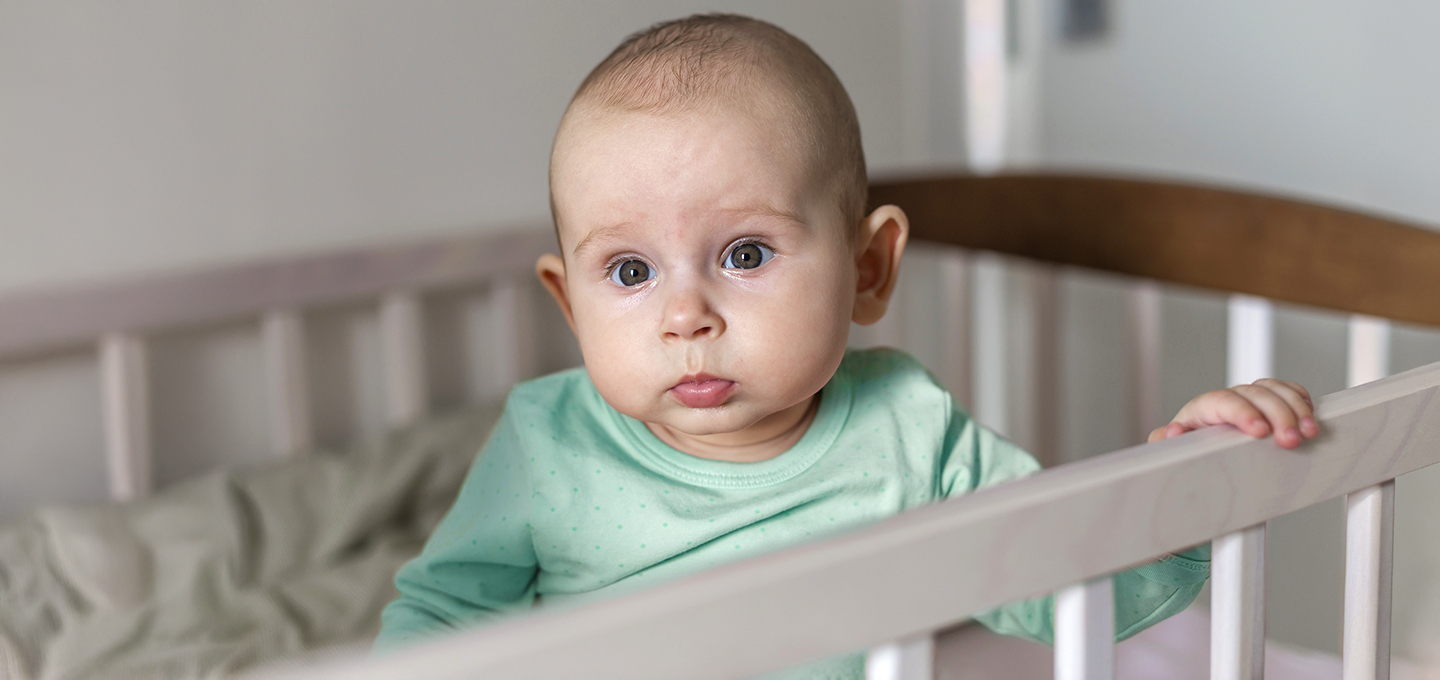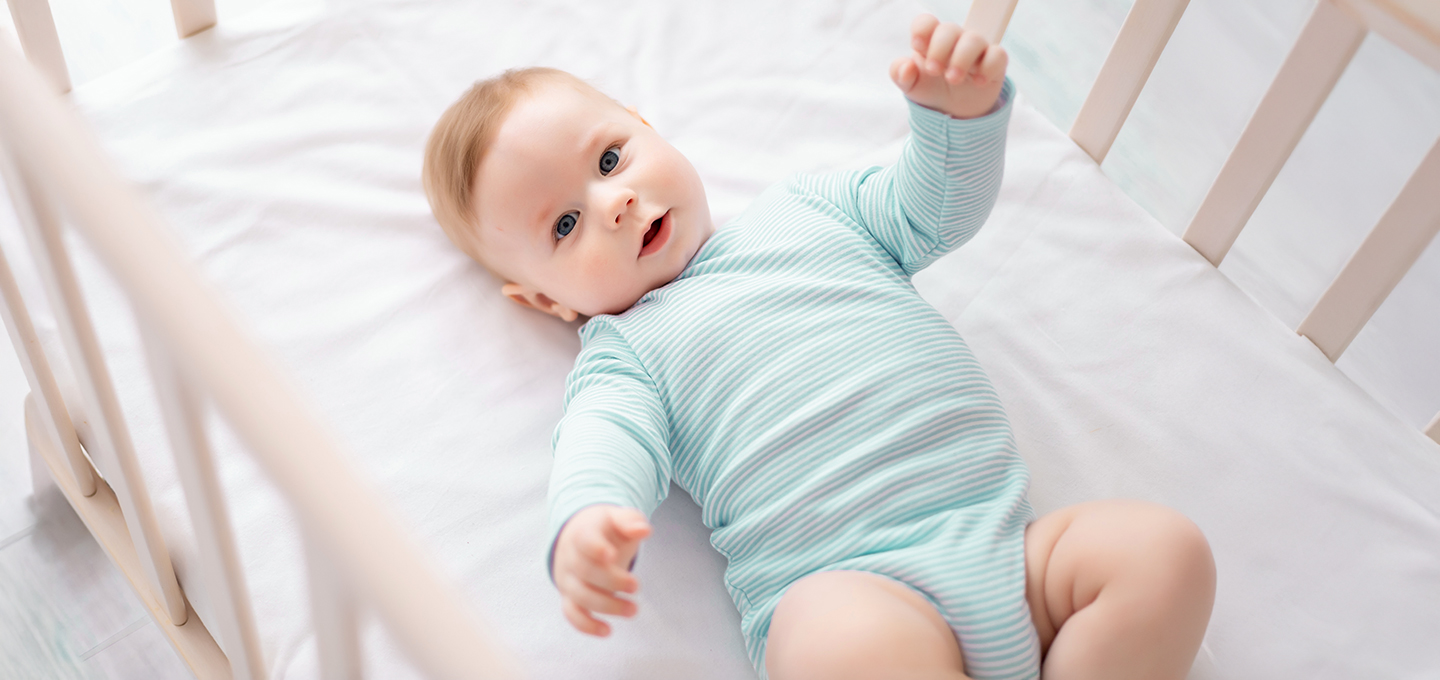
How to Get a Baby to Sleep: Gentle Tips for Restful Nights


IN THIS ARTICLE
Trying to figure out how to get a baby to sleep—especially during those fussy evenings—may feel overwhelming. Whether your little one is crying at bedtime, waking up minutes after dozing off, or resisting naps altogether, you’re not alone. The good news? There are gentle, expert-backed techniques that may help your little one wind down and rest easier.
Here’s a quick breakdown of what you’ll find in this guide:
If you’re tired and just need a few reliable ideas to try tonight, you’re in the right place. Let’s explore what works when it comes to helping a baby sleep.
Key Takeaways for better baby sleep
Of all the parenting challenges, none are more confounding than putting your baby to sleep. Luckily, we know a few tried-and-true methods to help you and your baby settle for the night. Creating the right sleep environment is a good start; swaddling and bedtime routines are also incredibly effective, and pacifiers can often be miracle workers.
If you're struggling to get your baby down for naps, or perhaps they are fighting bedtime check out the Smart Sleep Coach by Pampers™ - this easy-to-use app is jam packed with helpful content and expert sleep coaching support so you can effectively help your baby fall asleep faster and stay asleep longer, taking the guess work and worry out of nap and bedtime. Imagine that!
Putting Your Baby to Sleep: Tips and Tricks
Getting your baby to sleep can take patience, practice, and the right tools—especially in those early weeks when everything is still new. Many parents undergo a trial and error before finding what works best for their little one. The good news? A few gentle techniques—used consistently—can support your baby’s sleep and help bring more rest to your household.
Keep Your Baby Comfortable
When you're focused on how to get an infant to sleep, setting up a calm, cozy sleep space may help. Before putting your baby in the crib, check that they’re comfortable. Does your little one need a diaper change or a feeding? Is your baby dressed in appropriate layers for warmth, but not overdressed? Is the room temperature cool but comfortable? A quiet, cozy, and calm environment will go a long way in helping your baby fall asleep.
A dry diaper also makes a big difference. Pampers Zzz offer up to 12 hours of protection and a soft, comforting fit to help keep your baby dry through the night—so everyone can rest a little easier.
Swaddle Your Baby
Swaddling may help calm newborns by limiting sudden movements and mimicking the snugness of the womb. Just be sure to stop once your baby shows signs of rolling over, and always lay them on their back to sleep.
Establish a Sleep Schedule
Newborn sleep may be unpredictable, especially in the early weeks. While it’s too soon to expect a strict routine, gently guiding your baby toward regular naps and bedtime can support how to help newborns sleep more consistently over time.
Around 6 to 8 weeks is a good time to establish a sleep schedule, but keep in mind that it may be many more months before your baby can follow it regularly. That’s a good time to start shaping a daily rhythm—without expecting perfection. Offering naps and bedtime around the same times each day may help signal to your little one that sleep is coming.
Consistency matters, even if your baby hits a sleep regression or has trouble settling one day. Over time, a steady schedule and sleep-friendly habits may be what truly helps a baby sleep.
Tracking your baby’s sleep can reveal patterns that make scheduling easier. The Smart Sleep Coach by Pampers uses those patterns to build a rhythm that matches your baby’s natural sleep cues. Want help getting started? Take this free sleep assessment to learn how the app might help your baby fall asleep faster and stay asleep longer.
Place Your Baby in the Crib Before They Fall Asleep
When your baby is drowsy but still awake, gently placing them in their crib may help them learn to fall asleep on their own. While it might not work right away, this habit may support long-term self-soothing and help with putting your baby to sleep more independently.
To know when it’s time to put your baby in the crib, look out for sleep cues, such as
Remember to practice safe sleep for babies by always placing your little one on their back when you put them down in the crib for napping or sleeping. Also, make sure that their crib is free of loose bedding, blankets, pillows, and toys. These precautions help reduce the risk of Sudden Infant Death Syndrome (SIDS).
Establish a Bedtime Routine
You can begin a calming bedtime routine to help your baby wind down. The key is to keep it soothing—not stimulating—and finish the routine in the sleep space to help your baby associate it with rest.
Common bedtime routine ideas include:
Strike a Balance When Attending to Your Baby’s Needs at Night
If your baby wakes up fussing, try waiting a moment before stepping in. Instead, give your little one a chance to self-soothe and fall back asleep on their own. The Ferber Method is a well-known sleep training strategy that involves this approach.
But if your little one continues to cry and fuss, they may have a need that should be addressed, such as a feeding or diaper change. When attending to your baby’s needs at night, it’s best to do so without turning on the bedroom lights and while keeping things quiet and calm. After you’re done with the feeding or diaper change, put your baby back in the crib for sleep.
To learn more about helpful sleep strategies, watch the video below!
What to Avoid When Putting Your Baby to Sleep
Now that you have a few tips and tricks for putting a baby to sleep, it’s just as important to know what not to do. Avoiding these common habits may help your little one develop healthier sleep patterns:
When to Visit Your Healthcare Provider
If your little one is consistently having trouble sleeping despite a calming routine and healthy sleep habits, it’s a good idea to consult your baby’s healthcare provider. They can help rule out any medical concerns—such as reflux, allergies, or other issues—that might be interfering with rest.
You should also reach out if your baby shows signs of illness, has unusual sleep patterns for their age, or seems excessively fussy at night and nothing seems to help. Your provider can offer guidance on how to help your baby sleep more soundly and recommend next steps based on your baby’s needs.
FAQS AT A GLANCE
If your baby is having trouble settling, try a consistent bedtime routine, soothing motions like rocking, and a calm sleep environment. Pay attention to sleepy cues and avoid overstimulation. If sleep remains difficult, consult your baby’s healthcare provider.
The Bottom Line
If you’re wondering how to get an infant to sleep, the most helpful thing you can do is be patient. It takes time for your baby to adjust to sleep routines. A calm bedtime, consistent schedule, and responsive care during the day can all support what helps a baby sleep more easily at night.
Getting through sleep challenges is part of the parenting journey—but you’re not alone. Over time, your baby will begin to settle more easily, and everyone in the family can enjoy a little more rest.
Don’t forget to download the Pampers Rewards App to earn Pampers Cash and save big!
- Dr. Jodi Mindell. Sleeping Through the Night: How Infants, Toddlers, and Their Parents Can Get a Good Night's Sleep. (William Morrow Paperbacks, 2005).
- American Academy of Pediatrics. Sleep: What Every Parent Needs to Know. (Rachel Ed Moon (Editor). 2013).
- Mayo Clinic, Walter J. Cook, M.D. Kelsey M. Klaas, M.D.Guide to Your Baby’s First Years. 2nd ed.(2020)
- Cleveland Clinic. "The 6 Best Ways to Make Your Baby Tired (and 3 Things NOT to Do)."
- HealthyChildren.org. "A Parent’s Guide to Safe Sleep."
- HealthyChildren.org. "Getting Your Baby to Sleep."
- KidsHealth. "Sleep and Newborns."
- Mayo Clinic. "Helping Baby Sleep Through the Night."
- MedlinePlus. "Infant - Newborn Development."














